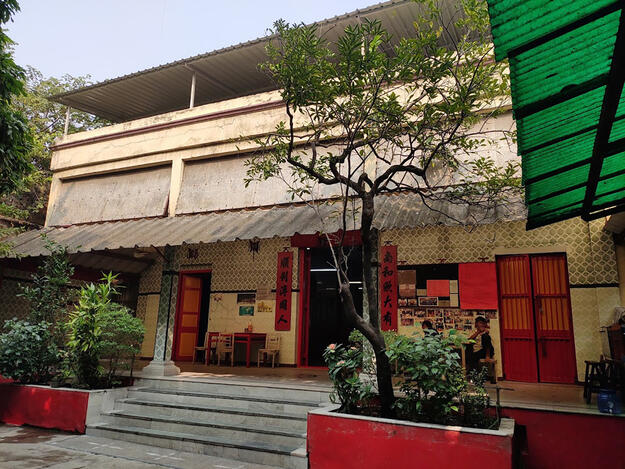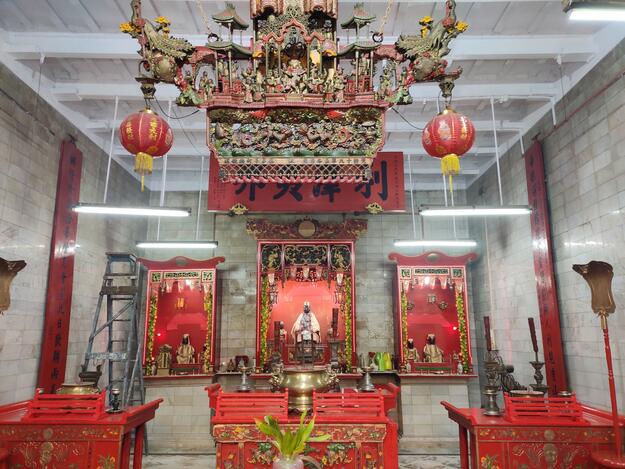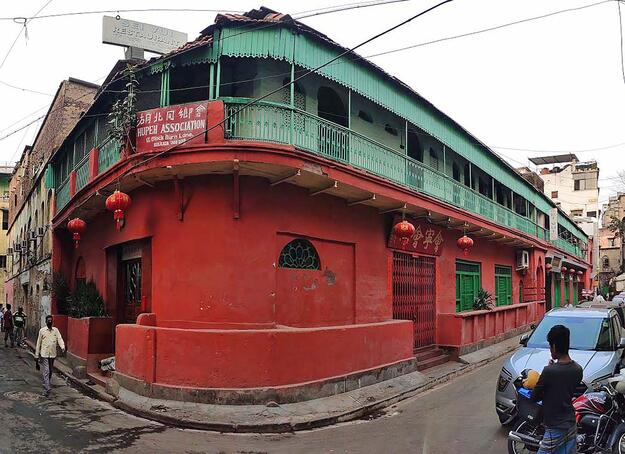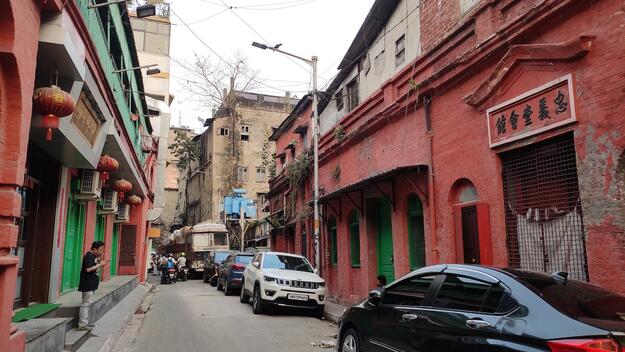Tiretta Bazaar
Site History and Significance
India’s First Chinatown
In the heart of the sprawling metropolis of Kolkata (formerly Calcutta) lies Old China Town in Tiretta Bazaar. It is testimony to the pluralistic society that flourished in the former British capital of India over the last two centuries. The neighborhood began to take on a Chinese identity in the mid-eighteenth century as Chinese sailors on the Indo-China trade routes started to settle in the area, bringing their own traditions, rituals, and architectural styles to form India’s first Chinatown. The neighborhood today represents a distinct community that retains its cultural and ethnic identity within the city.
Tiretta Bazaar became the backbone of commercial enterprise in the early twentieth century, attracting Hakka and Cantonese settlers who became renowned for fine handcrafted goods, especially leather products. They traded as far as Kunming in Yunnan and even set up trade houses with Chinese businesses. In time, the Hakka community moved away, yet Tiretta remained the center of the Chinese settlement and an important food, shopping, and cultural destination for Kolkata residents.
Lack of Recognition Threatens Historic Neighborhood
Although Tiretta is the earliest Chinatown in India, its community is marginalized and its heritage at risk. As a result of industrialization and ever-expanding global supply chains that make local production unsustainable, ad hoc breakfast markets for Kolkata’s commuters have taken over the neighborhood. Once breakfast is over, the open space becomes a car park and the community retreats into itself.
The neighborhood suffers from a lack of recognition and basic services, such as reliable trash collection. Adjacent development encroaches upon the historic neighborhood and threatens its existence, while a dwindling and aging community are left to uphold local tradition.
2022 World Monuments Watch
The 2022 World Monuments Watch advocates for the significance of Tiretta Bazaar and for the Chinese community that made it a thriving commercial and cultural center. While individual temples are recognized and protected, recognition as an historic district will safeguard the entire neighborhood and draw attention to the need for better services, while encouraging its integration into citywide development plans. Working with the community to understand their needs and aspirations will ensure that planning for the future of the neighborhood is respectful of its unique local heritage and traditions. This is a clarion call to preserve the diversity of India’s heritage.
![]()
Learn More
Through the World Monuments Watch, WMF collaborates with local partners to design and implement targeted conservation programs—including advocacy, planning, education, and physical interventions in the historic built environment—to improve human well-being through cultural heritage preservation.
Sign up for our newsletter to receive regular updates on our projects, stories from the field, upcoming events, and more!
![]()




